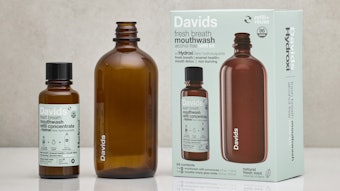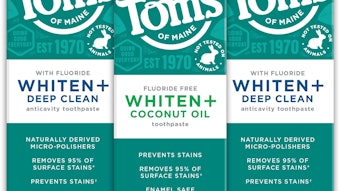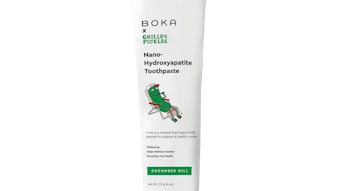
The global oral care landscape is an ever-changing space of new consumer learnings, technologies, and challenges. These transformations are prompted by consumers’ continual evolution in their dental needs and wants, technologies that are efficient in delivering and reinforcing the benefit promise, and new ingredient regulations.
Log in to view the full article
The global oral care landscape is an ever-changing space of new consumer learnings, technologies, and challenges. These transformations are prompted by consumers’ continual evolution in their dental needs and wants, technologies that are efficient in delivering and reinforcing the benefit promise, and new ingredient regulations.
Consumers experience a wide range of issues in the oral cavity, but now more than ever they understand how oral health is directly linked to whole body health. This equates to their demand for products that work faster whether it is for whitening, gum deterioration, or plaque removal. To combat these needs, the oral care shelf is more diverse than ever as consumers’ needs vary between a single to a multi-benefit offering.
Though there are products to address these needs currently, most oral care products take a sustained-usage period for individuals to realize their effectiveness. Oral care companies have paid particular attention to this need to create products that work faster than ever to quench the consumer’s thirst for efficacious speed; none more relevant than in the whitening space where you can see the difference after one day.
However, new chassis chemistries also can bring taste challenges, such as metallic, bitter, saltiness, and astringency to name a few. The understanding of receptor activation of these materials and development of flavor maskers and blockers to counteract these taste attributes will play a critical role in oral care products.
Freshness remains a top deliverable in both paste and rinses, and cooling agents have carried the bulk of the responsibility to deliver the freshness aspect. But their importance goes even further now to help drive home the product’s benefit promise. No longer is just “length” of cooling after brushing the main differentiator for freshness, but also “when” (during brush / after expectoration) and “where” (hard/soft tissue, retro-nasal) are also key drivers. Understanding the cooling equation per benefit space is key to delighting the consumer and driving home the product’s primary benefit. Fortunately, flavor suppliers are tireless in their effort in bringing new cooling technologies to expand the sensate toolbox. Freshness remains a top deliverable in both paste and rinses, and cooling agents have carried the bulk of the responsibility to deliver the freshness aspect.Wesley JvR/peopleimages.com at Adobe Stock
Freshness remains a top deliverable in both paste and rinses, and cooling agents have carried the bulk of the responsibility to deliver the freshness aspect.Wesley JvR/peopleimages.com at Adobe Stock
From a flavor character standpoint, mint (peppermint, spearmint, wintergreen) is still king in most geographies. Consumer expectations of mint have also grown while considerable advancements have been made by mint companies and the farming industry. The science of cross breeding of mint varieties is producing plants which can deliver higher oil yield per acre, higher purity, lower watering need, and increased disease resistance allowing for a more sustainable future.
Though advances are being made from a breeding perspective, regulations on flavor ingredients (i.e. Category 6 products) are also increasing as well; specifically, L-carvone the primary ingredient for spearmint flavors. The need for either a 1:1 replacement and/ or a combination of ingredients to deliver a character match will be in high demand. Further adding to the complexity of this situation is the cost of raw materials albeit natural or synthetic due to numerous reasons such as greening, etc.
Trends play an important role in the dentifrice category taking cues from several other business units, such as Food/Beverage and Beauty for example, influencing flavor design, paste aesthetics, and packaging. No region has been more active from a flavor trends point of view than Greater China (GC). The GC consumers have been more willing to explore other dominant tonalities, especially in toothpaste, ranging from floral (rose) to fruity (Yuzu). With this range of character acceptance, Oral Care flavoring for this region contains a perfumery aspect as well.
As consumer needs and desires continually raise the bar, innovation will need to be more frequent, poignant and efficient to change the Oral Care game. This will require agility and mastery to navigate the technology, regulatory & the trends landscapes simultaneously.










